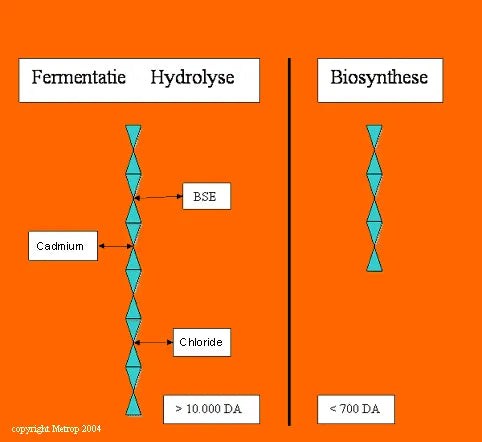Bloom Booster / Flower Booster
Bloom Booster or often called Flower Booster almost all work in the same way and that is by means of free Amino Acids. Some products can also contain hormones, but the base mostly works with Amino Acids.
You can obtain Amino Acids via Fermentation, Hydrolysis or through the complicated process of Biosynthesis.
A number of Amino Acids together form a helix. A helix penetrates through a cell wall, but have to be smaller than 1500 Dalton (type of size measure) before the cell wall can let it through.The helix ends up in the cell nucleus where the DNA is located.
DNA structures are like small switches with each switch having its own function. Functions like for example, the thickness, width, length, color of a plant. The number of stomata and the entire shape of a plant below and above the ground.
A plant is always stressed, especially if it is a plant cutting from a motherplant that is cut time and time again and has to recover over and over. This stress phenomenon can also be seen at its worst in the leaves, for example in leaves with finger-forming where fewer fingers appear.
Different Amino Acids together that form a helix you can compare with a key that only fit it own DNA lock and switch the DNA ON again.
In fact, Amino Acids are plant stress eliminators who ensure optimum growth and flowering of the crop.

Fermentation / Hydrolysis
Most Biostimulant 's are made with Fermentation or Hydrolysis.
The disadvantage of Fermentation and Hydrolysis is that it is limited with the number of different helixes and therefore the number of functions.
What is in it is in it, and cannot be changed, only diluted. And that dilution is done a lot, sometimes so much so that these products no longer have any visible working function.
Also these so-called organic products are usually soiled with impurities such as heavy metals that are toxic and biologically dangerous to plants and people.
Another disadvantage of such bloom booster is that the Amino helixes of Fermentation and Hydrolysis are longer than 10,000 DA, which means that the uptake in to the cells of these helixes takes much longer because they first have to be made smaller by plant enzymes.

Biosynthesis
The advantage of a Bloom booster made by Biosynthesis is that the number of different helixes and therefore functions can be changed and increased. A product made by Biosynthesis then stimulates not only the various root functions, but also the production of hormones and the formation of leaves, stems and flowers.
Also in such biostimulant the Amino helixes are clean from impurities and diseases which is better for plant and human health.
Another advantage is that the Amino helixes of Biosynthesis are only 700 DA long and are therefore immediately absorbed by the plant cells and immediately boost the plant in their growth and flowering.
The disadvantage is that Biosynthesis is a difficult process and technique, so that these products are not available by many brands.
Metrop AminoXtrem flower booster is a product made with biosynthesis. Give this product today and the plant immediately start to recover.

